Comparing the top conversational AI platforms: Features, benefits, and drawbacks
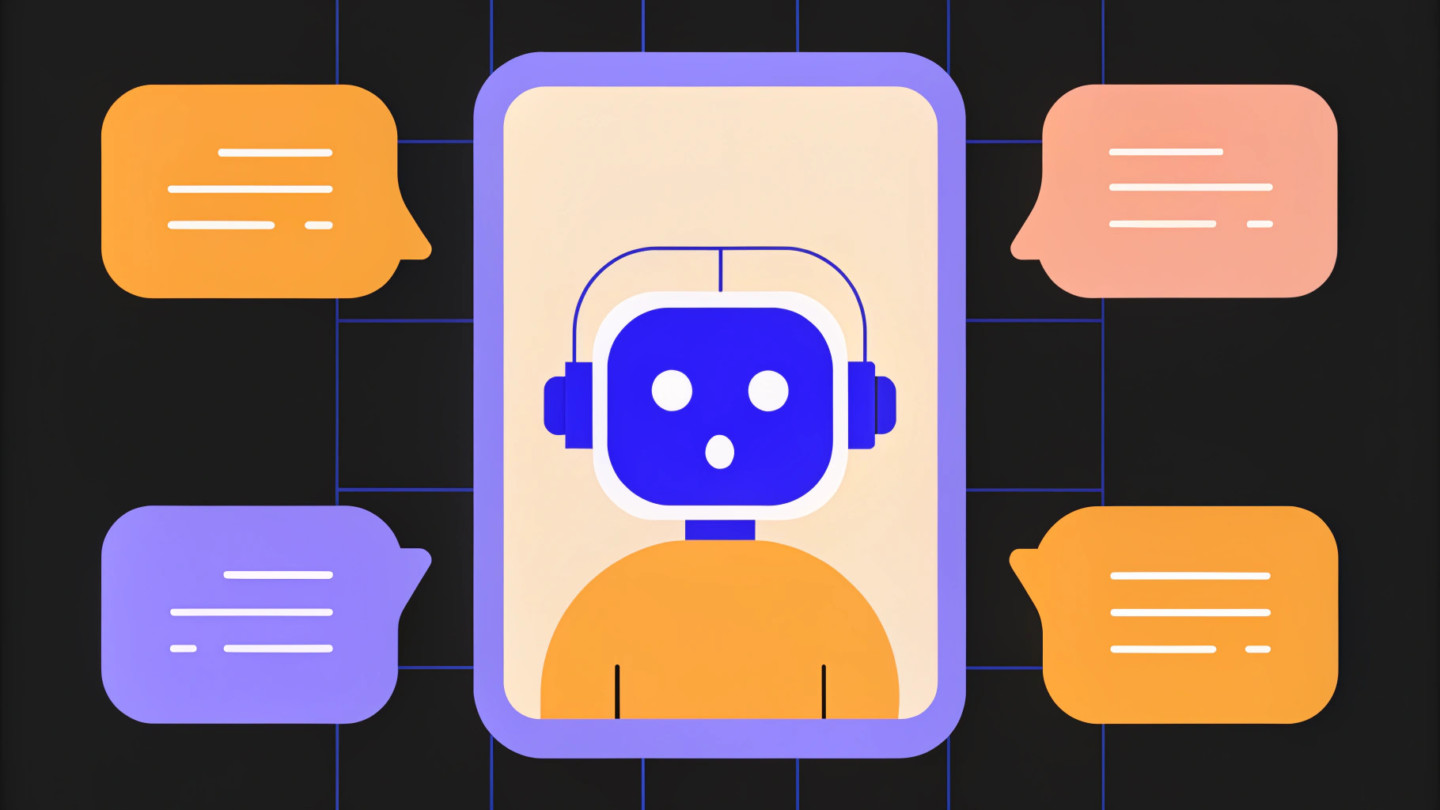
Introduction
As businesses increasingly seek to enhance customer engagement and streamline operations, conversational AI has emerged as a pivotal technology in this evolution. By leveraging natural language processing and machine learning, these systems enable machines to interact with users in a human-like manner, transforming the landscape of customer service, sales, and support.
With a staggering 52% of companies investing significantly in AI technologies in 2023, understanding the capabilities, applications, and challenges of conversational AI is essential for organizations aiming to stay competitive.
This article delves into the following aspects of conversational AI:
- Definition and applications
- Key criteria for selecting platforms
- Leading solutions
- Challenges and future trends that shape this dynamic field
Understanding conversational AI: Definition and applications
Let’s get one thing straight: if your business isn’t using conversational AI, you’re missing out. These platforms leverage cutting-edge technologies like natural language processing (NLP) and machine learning to create machines that can chat like humans. They’re not just fancy toys; they’re essential tools for service, sales, and support. In 2023, 52% of businesses put 5% of their budget into AI. That’s a serious investment that shows how crucial these technologies have become.
Think about it: chatbots on your website, virtual assistants, and voice-activated devices. They’re all designed to improve user experience by providing relevant information when it’s needed most. Take Dashly, for example. It automates 90% of the appointment booking process and sorts leads into high and low-quality categories. This isn’t just a nice-to-have; it’s a game changer for sales efficiency. By automating 60-70% of non-MQL leads and organizing 70-90% of meetings with MQL leads without the sales team lifting a finger, Dashly slashes response times and boosts SLA compliance.
But it doesn’t stop there. Dashly boasts an impressive 50-60% email open rate and predicts client outcomes with 99% accuracy for meeting totals and 98.3% accuracy for revenue forecasts. Before Dashly came on the scene, clients struggled with slow response times, poor SLA compliance, and wasted effort on low-quality leads. These issues were dragging down their sales, especially for premium packages.
Implementing AI-driven solutions on a conversational AI platform isn’t just about efficiency; it’s about transforming client satisfaction. This kind of strategic automation frees up your human agents to tackle more complex tasks, leading to a smoother, more effective customer service model. In today’s fast-paced market, that’s not just smart — it’s necessary.
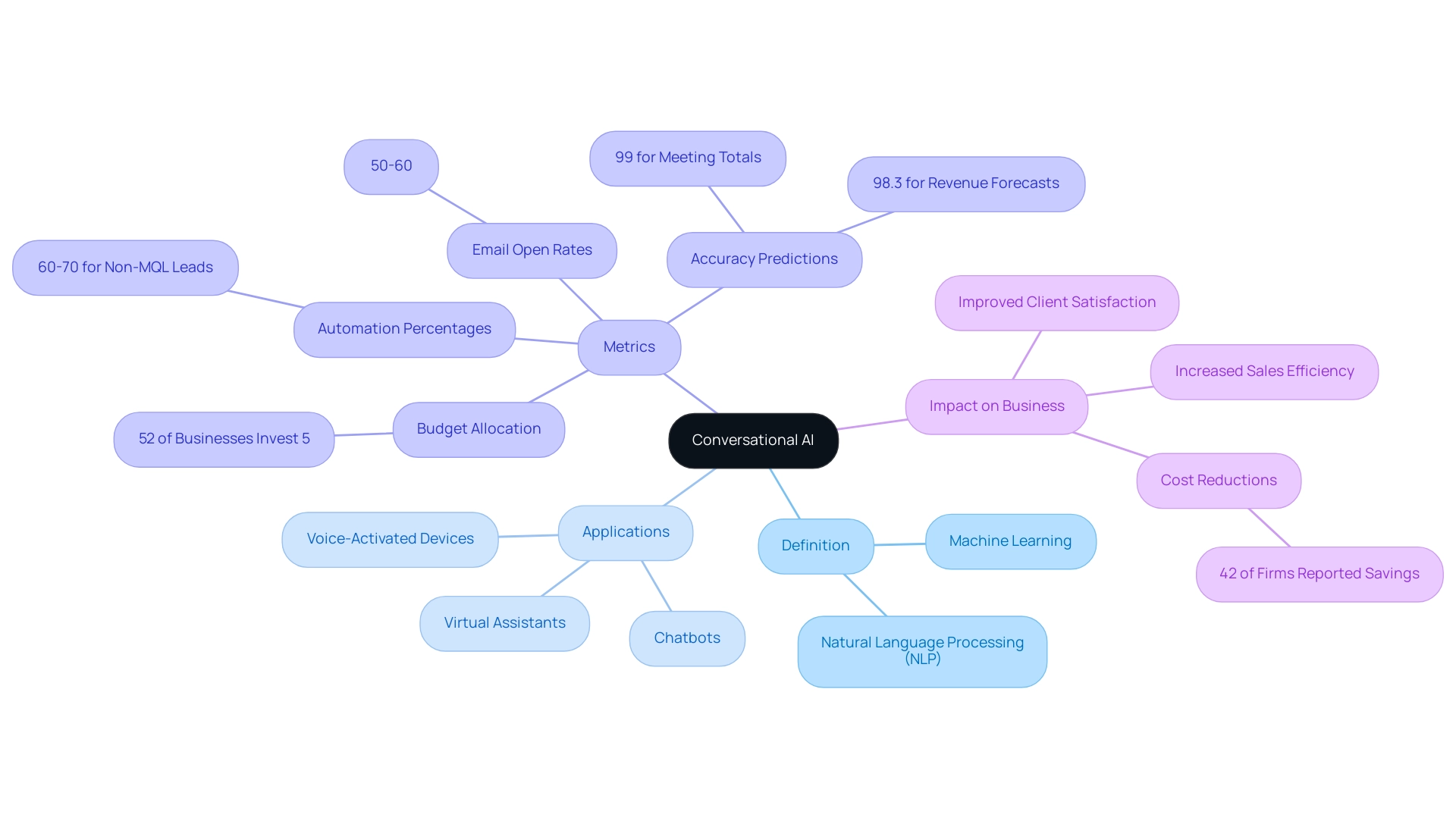
Key criteria for evaluating conversational AI platforms
When it comes to evaluating dialogue-based AI systems, there are a few key criteria that you can’t afford to overlook:
AI capabilities: Think of this as the engine under the hood. The system’s ability in natural language processing and machine learning is critical. These capabilities determine how well it can understand and respond to user questions. By 2026, it’s projected that 30% of AI models will use various data types. That’s a clear signal that you need advanced AI features in your conversational tools.
Integration: You want a platform that plays well with your existing Customer Relationship Management (CRM) systems and sales tools. Why? Because smooth integration not only simplifies your workflows but also boosts the efficiency of your client interactions. It’s like having a well-oiled machine — everything just works better together.
Usability: A user-friendly interface is a must-have for both clients and sales teams. If the platform is easy to use, interactions improve, and that leads to happier users. Happy users translate to higher satisfaction ratings. It’s simple: make it easy, and people will love it.
Security: In today’s world, data privacy is non-negotiable. You need to evaluate a platform’s security measures thoroughly. Strong security protocols are essential to safeguard sensitive client information from breaches and unauthorized access. It’s your first line of defense.
Analytics and reporting: This is where the rubber meets the road. Platforms that provide robust analytics are invaluable. They let you track performance metrics, user engagement, and conversion rates, which are crucial for ongoing optimization. In fact, 64% of companies recognize that chatbots can offer a more personalized experience than human reps. That’s a powerful insight into how data can enhance client engagement. Plus, research by Bickmore & Pickard (2005) shows that building rapport is key; relational agents can foster more trust and engagement than their non-relational counterparts.
Hyper-personalization: A case study reveals that 63% of leaders believe AI can create hyper-personalized user experiences. This isn’t just fluff; it’s essential for staying ahead of user expectations. Integrating a conversational AI platform into your CRM can significantly improve client interaction through tailored product suggestions.
By taking a close look at these criteria, companies can select dialogue-based AI solutions that not only meet today’s needs but also adapt to future trends in client engagement. Remember, the right choice today sets the stage for success tomorrow.
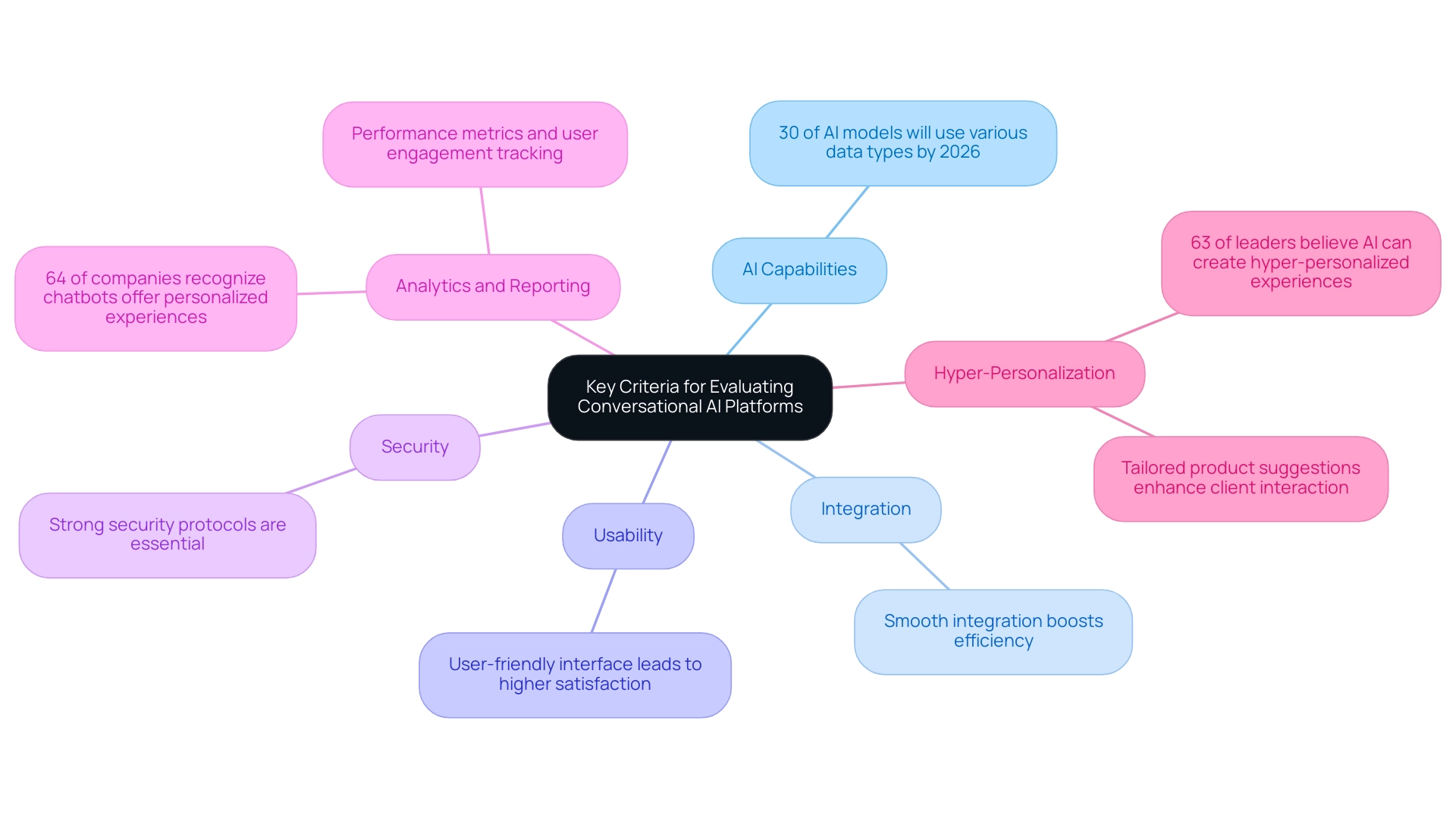
Top conversational AI platforms: Features and benefits
In the fast-moving world of conversational AI, several platforms stand out because they cater to the specific needs of organizations. Let’s break down some of the key players:
Dialogflow: This is Google’s brainchild, and it’s built for natural language processing (NLP). Think of it as the translator that helps machines understand us better. Its ability to integrate seamlessly with Google services gives it an edge, making it a go-to for everything from chatbots to voice assistants.
Dashly: This one’s your assistant in your sales processes. Dashly automates lead qualification and identifies MQLs in a few key questions. THen it guides non-MQLs down the self-serve funnel. MQLs are offered to book a meeting. After the meeting’s booked, Dashly’s AI generates personalized nurturing sequences to deliver value to the lead and make sure they’ll attend your meeting. From the first interaction to a meeting without any human involvement.
Microsoft Bot Framework: Here’s where you can build and deploy bots across multiple channels, including Microsoft Teams. The recent upgrade to Microsoft Teams Premium enhances its capabilities, making it a strong choice for businesses already in the Microsoft ecosystem. It’s about making AI a natural part of your existing workflows.
Zendesk Chat: If your focus is on customer support, Zendesk Chat is your best friend. It connects directly with the Zendesk service system, streamlining communication and improving client interactions. It’s like having a well-oiled machine that boosts service efficiency.
Now, let’s take a look at a compelling case study: Shopify and Google Cloud have teamed up to supercharge eCommerce with AI-driven search functionalities. This partnership has led to improved search capabilities, which means a better shopping experience for users.
Each of these platforms brings unique strengths to the table, from advanced analytics to multi-channel support, all of which can significantly enhance sales effectiveness. As conversational AI evolves, understanding these features is crucial for companies that want to leverage this technology to improve client interactions.
And here’s a statistic that should get your attention: dialogue-based AI can cut service costs by up to 30%. That’s a big number. But there’s a catch. With 85% of users worried about misinformation from AI bots and 86% calling for stricter policies, businesses need to take a responsible approach. Transparency and reliability are key to building trust in AI interactions. If you want your AI to succeed, you’ve got to prioritize these elements.
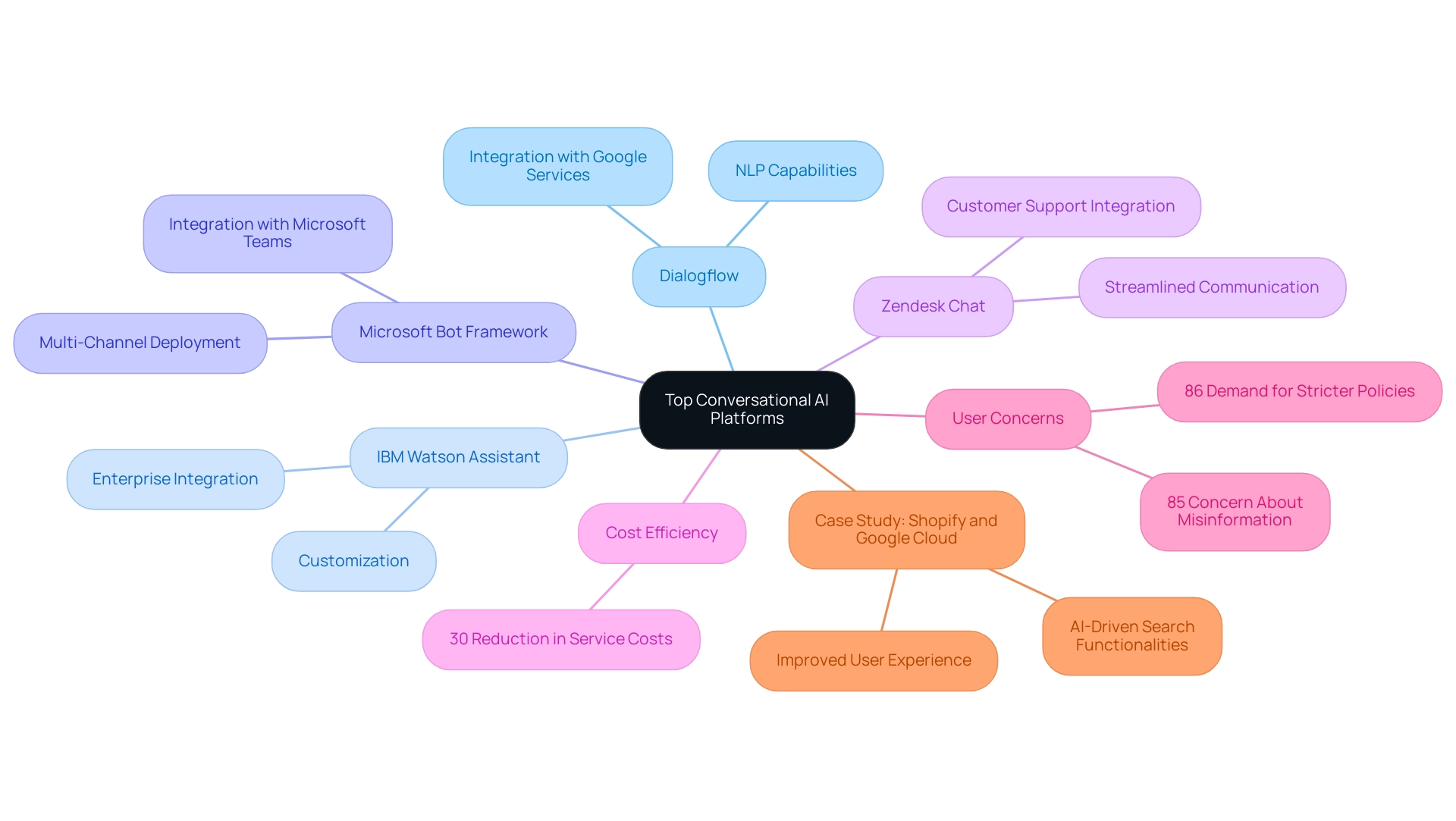
Challenges and drawbacks of conversational AI solutions
Conversational AI systems have a lot going for them, but let’s not kid ourselves — they come with some hefty challenges that organizations need to tackle head-on. First off, there’s limited understanding. Sure, AI has made leaps and bounds, but it still stumbles when faced with complex questions or the nuances of human language. This often leads to user frustration, and nobody wants that.
Then we have integration issues. If your AI platform can’t mesh smoothly with your existing systems, you’re looking at potential chaos in your workflows. It’s like trying to fit a square peg in a round hole — just doesn’t work.
Next up is the ongoing need for maintenance and updates. AI systems require regular check-ups to remain effective. This can mean extra costs and resource allocation that might feel like a drain for some organizations. It’s an investment, but one that can pay off if managed right.
One of the biggest hurdles is data privacy concerns. Handling sensitive client information isn’t just a technical issue; it’s a legal minefield. Compliance with regulations like GDPR is non-negotiable, and that means implementing robust security measures to protect client data. Recent stats show that 85% of users worry about getting false information from AI bots, and 86% want stricter rules around AI interactions. That’s a loud wake-up call.
Moreover, 43% of clients still prefer human interaction for services. That’s a stark reminder that dialogue-based AI has its work cut out for it in meeting client expectations. Addressing these concerns isn’t just important — it’s urgent.
As organizations mull over adopting a conversational AI platform, they need to balance these challenges against the potential benefits. A recent Zendesk report from 2023 shows that 71% of clients believe AI will actually enhance service empathy. That’s a significant opportunity for innovation. The case study “Future Expectations for AI and Chatbots” reveals that 95% of clients think chatbots will improve service, with 90% of businesses expected to jump on the AI chatbot bandwagon in the next 3 to 5 years.
This anticipated shift signals a major evolution in client interaction management. It’s a prime time for service innovation through conversational AI by 2025. But let’s be clear: artificial empathy must be handled with care. We want to enhance the user experience, not diminish it. Integrating AI solutions into customer service is no small feat, and it demands thoughtful management to navigate these complexities effectively.
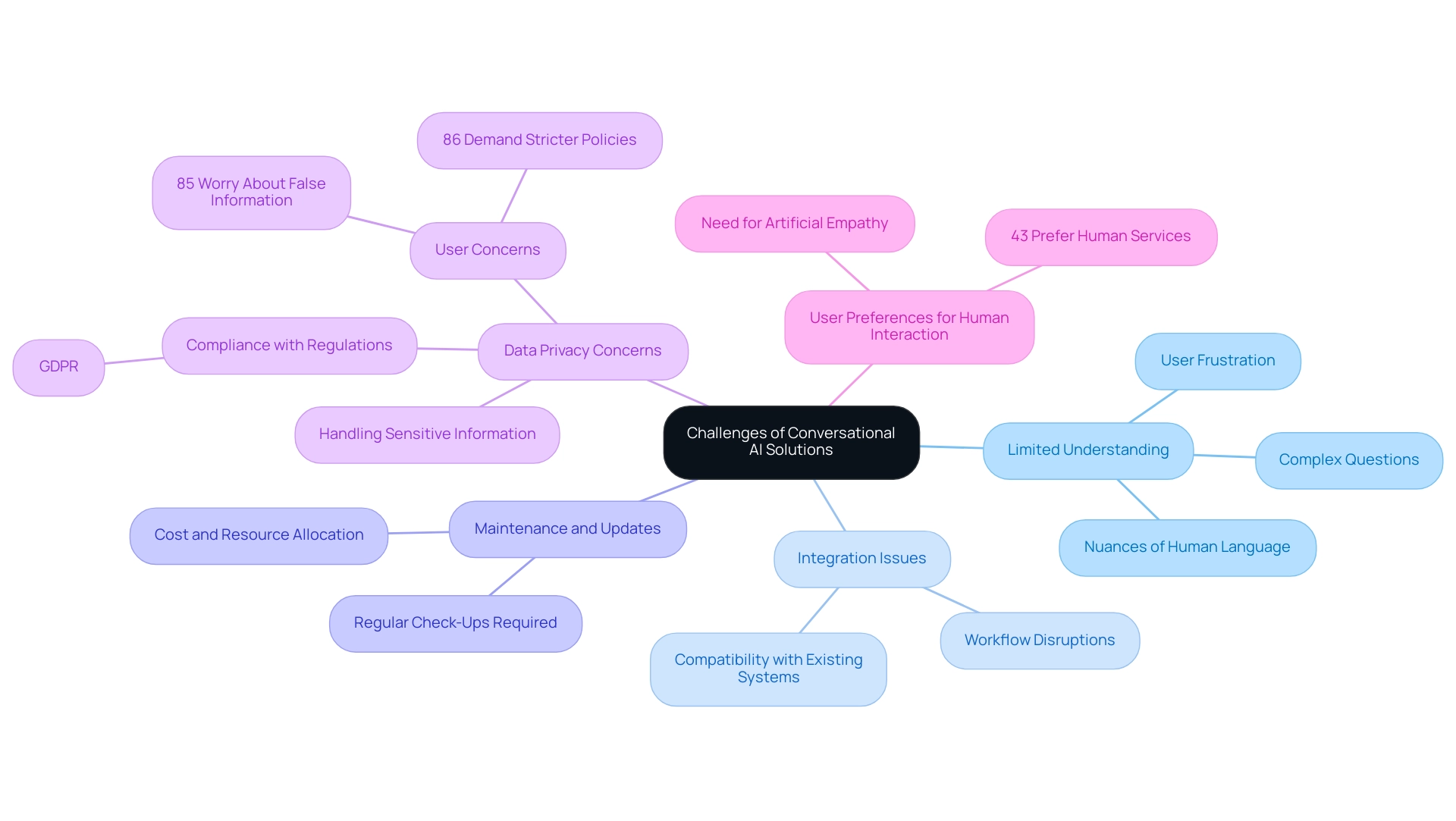
The future of conversational AI: Trends and innovations
The landscape for dialogue-based AI is shifting, and it’s not just a minor adjustment — it’s a full-on evolution. Conversational AI platforms are gearing up to tap into these trends, especially when it comes to boosting sales efficiency.
Enhanced personalization is at the forefront. Imagine a future where AI can tailor interactions based on individual user behaviors and preferences. This isn’t just a nice-to-have; it’s a necessity. Businesses that leverage this capability will build stronger connections with customers, leading to higher satisfaction and loyalty. And yes, that translates directly into increased revenue.
Next, we have voice technology advancements. Voice recognition is getting smarter. This means AI will better understand and process spoken language, making interactions feel more natural. Think about how Dashly automates 90% of the booking process for high-quality leads. As conversational AI integrates with Internet of Things (IoT) devices, we’re looking at a future where environments are interactive and responsive. This isn’t just theory; it’s about creating seamless communication that enhances user experience and operational efficiency. As Sebastien Krajka puts it, for businesses, this means deeper client engagement, faster problem-solving, and improved efficiency.
Then there’s the matter of regulatory compliance. Data privacy regulations are evolving, and conversational AI platforms must keep pace. This isn’t just about avoiding fines; it’s about innovation in security features to ensure client data is treated responsibly. Businesses need to stay informed about these regulations to sidestep potential pitfalls.
Before clients implemented Dashly, they faced serious challenges: long response times, low SLA compliance, wasted time on low-quality leads, and the risk of missing out on high-budget clients using personal emails. These issues often translated into poor sales performance, especially for premium packages.
The trends we’re seeing point to a significant shift toward smarter, user-centric conversational AI solutions. These innovations are set to enhance sales processes and client engagement in the years to come.
With about 60% of B2B and 42% of B2C companies already using chatbot software, the adoption of these advanced technologies is only going to accelerate. Businesses are starting to recognize the transformative potential of these tools to reshape customer interactions and boost revenue. It’s time to get on board or risk being left behind.
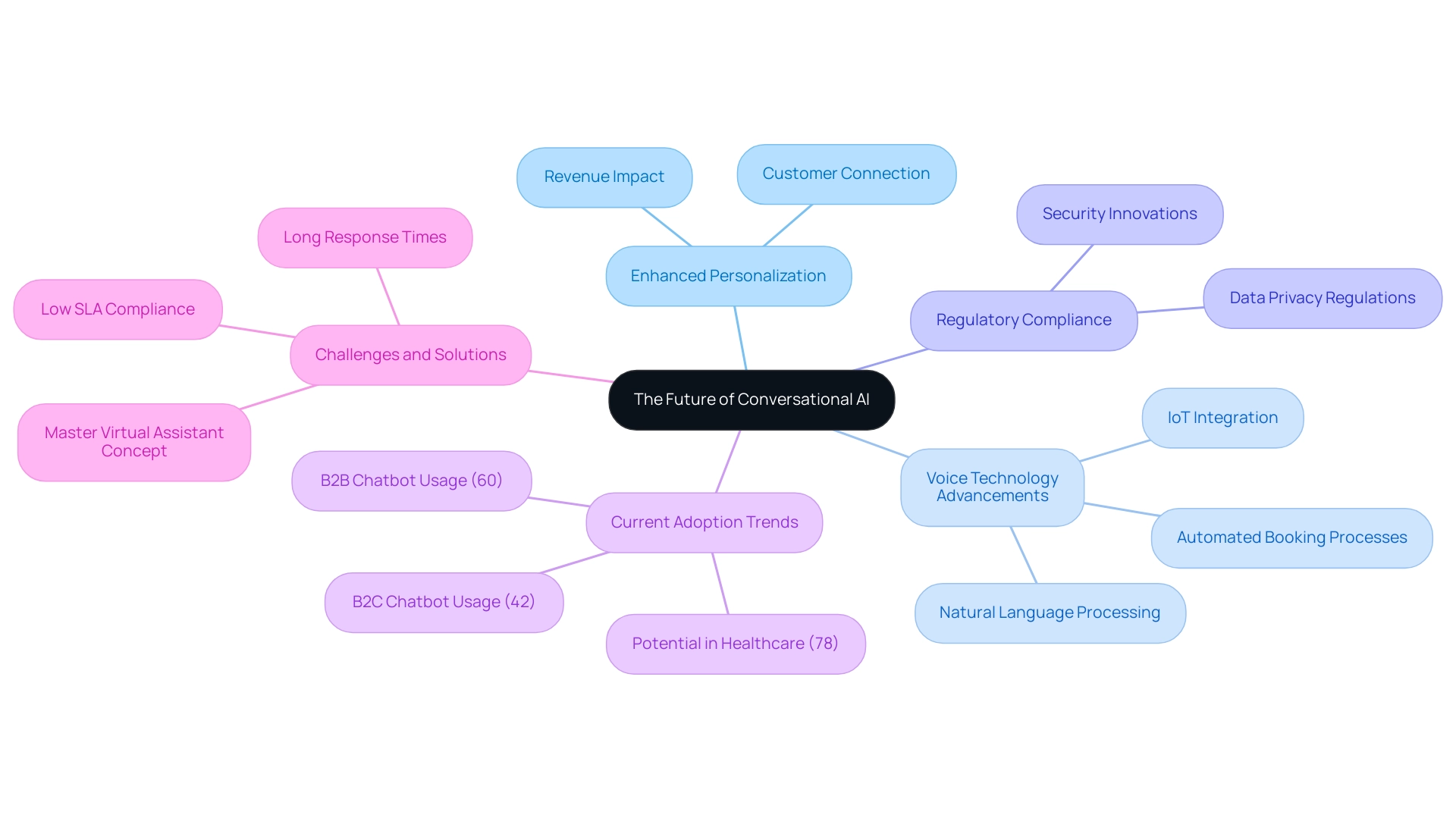
Conclusion
The exploration of conversational AI reveals a transformative technology that is reshaping the way businesses engage with customers. By utilizing natural language processing and machine learning, conversational AI systems facilitate human-like interactions, significantly enhancing customer service, sales, and support functions. As highlighted, a considerable number of companies are investing in this technology, recognizing its potential to streamline operations and improve customer satisfaction.
Key criteria for evaluating conversational AI platforms include:
- AI capabilities
- Integration with existing systems
- Usability
- Security
- Analytics
These criteria are critical for businesses looking to implement these solutions effectively. Understanding the strengths of leading platforms like Dialogflow, Dashly, Microsoft Bot Framework, and Zendesk Chat can help organizations choose the right tools to meet their specific needs.
However, challenges remain, including:
- Limited understanding of complex queries
- Integration issues
- Data privacy concerns
- The need for ongoing maintenance
Addressing these challenges is vital for organizations to harness the full potential of conversational AI while ensuring trust and reliability in customer interactions.
Looking ahead, trends such as:
- Enhanced personalization
- Advancements in voice technology
- Integration of AI with IoT devices
will further propel the evolution of conversational AI. As businesses adapt to these innovations while remaining compliant with evolving regulations, they stand to gain significant advantages in customer engagement and operational efficiency. The future promises a more intelligent and responsive landscape, making it imperative for organizations to stay informed and strategically align their investments in conversational AI.








![La guía definitiva de growth marketing [explicada por un growth hacker]](https://www.dashly.io/blog/wp-content/uploads/2023/04/The-ultimate-guide-to-growth-marketing-explained-by-a-growth-hacker-720x317.png)